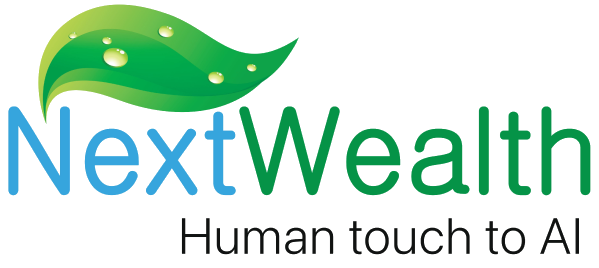Introduction
Constantly striving for the future unknown, we feverishly plan, consult, and discuss only to see a sliver of what our tomorrow brings. Rethinking the status and going beyond the ‘tried and tested’ methods of the past, we provide a strategy that is robust enough to weather the ups and downs of the future. While sketching out the blueprints and examining our present for clues, we forget one important element. What if the future looks vastly different from our present? Our plans operate under the assumption that tomorrow will look like today, it lulls us all into a sense of certainty that forces us to let our guards down.
Thinking beyond the status quo is essential if organizations are to develop a strategy that truly prepares us for the future. Challenging the status quo and thinking beyond it, is what differentiates us at NextWealth from our industry peers.
Through this blog, we take a deep dive into the shortcomings of the traditional approach and how we can overcome the pitfalls to rise above the ordinary.
The shortcomings of the traditional approach
Throughout the pandemic, businesses have faced and overcome extreme adversities like the disruption of supply chains when global trade came to a near standstill. Only those who came up with creative solutions to reach out to the customers and employees kept their establishments afloat and, in some exceptional examples, thrived in the new normal. These visionaries uprooted the status quo and forced themselves to think and act outside the box. The pandemic taught us that enormous structures of global trade and commerce are fragile; little is guaranteed.
Unfortunately, current methods of planning do not always consider changes in the external environment, and disruptions these changes may cause. This area of investigation is often overlooked leaving many vulnerable.
Traditional planning processes do not spend enough time exploring future possibilities as they should be. Therefore, due to lack of research and preparation, potential risks are missed due to stagnated thinking around ‘what we know’ instead of ‘what is most likely going to happen.’
After an important event, some key questions arise:
- Do we have clarity on what exactly happened?
- What was the main cause?
- How do we do damage control?
However, while anticipating a watershed moment we must ask ourselves:
- What might happen?
- What trends could potentially influence this ever-evolving situation
- What are the alternative possible outcomes?
- Is long-term safety in jeopardy?
- How might we respond?
The four-level strategy development and implementation process
- Environmental scanning: Here we tend to seek information on current market trends, collect past data, study decision-making patterns, organizational structures and more. Ideally, the more we find and understand at this stage, the easier it would be to make meaningful decisions.
- Strategic Thinking: There are two types of people who can get a holistic and accurate picture of the future, namely, time travelers and lying fortune tellers. At NextWealth, we’re neither. Through a deep understanding of future market trends, we entertain a variety of possibilities. We may not be able to investigate the future, but we are ready for whatever it throws at us.
- Decision Making: Based on all the homework done, we consider various options carefully to safeguard against potential risks, new external environmental changes, and more. Making the right choice here impacts our life tomorrow.
- Strategic Planning: What is best for us? How will our today’s actions impact our tomorrow? The above steps help us plan our action to be prepared for the future.
At NextWealth we look beyond the status quo
While the pandemic did throw life out of gear, forcing industries to adapt to the new normal, NextWealth’s effective leadership recognized the need of our customers, and led our teams to implement a successful business continuity plan. The three key points that made this possible were:
- Looking beyond the numbers: There’s little merit in arguing over a single divisive issue. A bird’s eye view of all blind spots, any vulnerabilities will give us a holistic idea of the business itself, while simultaneously identifying missed opportunities and potential trade across issues.
- Encouraging a gain frame: While it’s only human to be bogged down by current losses rather than focus on the future gains, at NextWealth, we took the path less travelled. We move beyond the losses and focus on profits.
- Bringing everyone to the table: While designing our work-from-home model, all centers involved in our operations participated, formulated, and implemented the new plan that kept over 3000 employees safe. Everyone gets a seat at the table; a variety of perspectives is always welcome.
Conclusion
The world is not moving past uncertainty; it’s moving into it and will need to learn to live with it. This troublesome anxiety is not going anywhere, anytime soon. However, at NextWealth, we dig deep into existing data, enact countless simulations leveraging AI and ML capabilities and consider the best possible course of action to align with ever-evolving customer expectations and the uncertainty the future brings.

